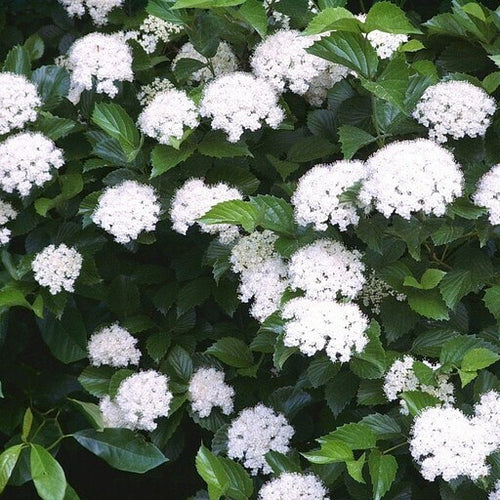A do-it-yourselfer (DIY) has all the skills, energy, and intellect to tackle their landscaping project, new or existing.
That is half the battle. The other half is the hidden pitfalls that a novice DIY will encounter. So, from experience and research, I have taken the liberty of collecting some significant pitfalls, which I address below:
a.) No plan, or as the Chinese would say, 'no ticket, no laundry.' Many landscapes have been the victim of random planting a plant because there was room, or it was a purchase that looked so cute.
If you are starting with a blank yard, drawing a plan for your entire yard and sticking to it will give you the desired results. Short of that, try at least to sketch a rough plan for one large area of your yard and put all your energy into working on that plan this year.
b.) Lacking fall color in your Landscape Design. We spend spring and summer planting, yet, come fall realize that we forget to plant for fall. The season holds tremendous promise for the DIY landscaper willing to plan for it. Autumn can present an abundance of color with the simple introduction into your landscape of the following; Arrowwood viburnum, Sumac, Fothergilla, Tor Spirea, American Bittersweet, Oakleaf Hydrangea, Virginia Creeper, Red Chokeberry Viking, or Black Chokeberry
c.) If the fall is often neglected in landscape design, surprise, the winter season takes a hit. This is not such a serious offense for us in the southern portion of the United States; however, the north needs a yard decor that will bring a smile and serenity. The following plant list will offer a nice balance between the transition from fall to winter:
red twig dogwood or red osier dogwood
plume grass
bayberry
cranberry bush Viburnum
winterberry holly
birch trees
d.) Irrigation is the critical factor in any design. We love how our plants are doing in our yards, yet we also need some vacation time. How are the plants going to their water? We can ask a friend or relative to take over our watering chore during our absence, but we all had an experience that makes for a not too stable condition. You have expended a lot of effort, both in the elbow grease, money, and not to forget the sentimental value. A solution, install an automatic irrigation system. Not only will it allow you to go on your vacation, but it will also reduce your overall yard maintenance time. A good investment in my book.
e.) Have a steep slope in your yard, making it tough to keep your topsoil during a heavy downpour? Plants do not seem to help the erosion; you may need a retaining wall. A retaining is built first, and then your planting begins.
f.) The adage, 'the best-laid plans of men and mice, have often gone astray' is befitting the principle of working with what you have. What do I mean? Is your yard rocky and has a lot of shade? Perhaps the summertime heat scorches all in its path? In some instances, you can successfully fight the terrain you inherited, as in the case of building retaining walls for slopes to fight erosion. In the alternative, instead of fighting it, it's better to go with the general flow of your yard and work with what you have. The key is 'to know your enemy and what options you have. Research is your best companion.
g.) A crucial element for your home landscape project is using deer-resistant plants. You carefully drew up a plan and stuck to it. The soil is fertile, automatic irrigation system, you've followed the plant instructions faithfully, applied a generous layer of mulch around them. Then one day, you come out of your house and find your plants in shreds! What happened? Deer had a buffet-style snack of your plants faster than you can, "Bambi goes to market." Your yard did not have any deer-resistant plants. As an example of deer-resistant plants, I listed below some effective perennial ground-covers:
Allegheny spurge (Pachysandra procumbens) and Japanese pachysandra (Pachysandra terminalis)
Northern sea oats (Chasmanthium latifolium)
Blue oat grass (Helictotrichon sempervirens)
Liriope or "lilyturf" (Liriope spicata)
Bugleweed (Ajuga reptans 'Atropurpurea')
Creeping Myrtle, or periwinkle vinca vines (Vinca minor)
Deadnettle (Lamium galeobdolon)
Catnip plants (Nepeta cataria)
Sweet woodruff (Galium odoratum)
Creeping thyme plants, such as woolly thyme (Thymus pseudolanuginosus)
h.) A significant consideration in home landscape design is functionality. When you dream up your landscape design, you envision its' aesthetic qualities. Wrong! Functionality takes precedence over aesthetics. This does mean that one cannot have aesthetics and functionality, but the bottom line of any design is safety, convenience, and usability.
In closing, I would like to mention that the 'Books of Dummies' is an ideal research and information tool for your potting bench. My bookshelf has numerous editions of the infamous 'yellow and black books, covering many subjects.
Source to Buy a Wide Selection of Plants and Trees for your Home Landscaping
https://www.tnnursery.net



















































